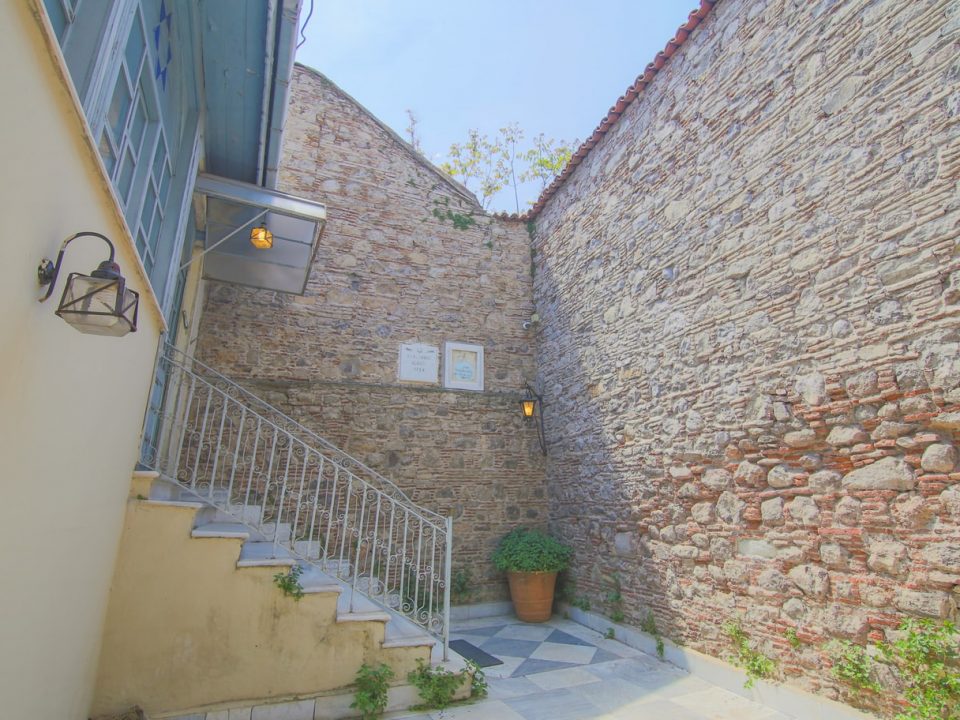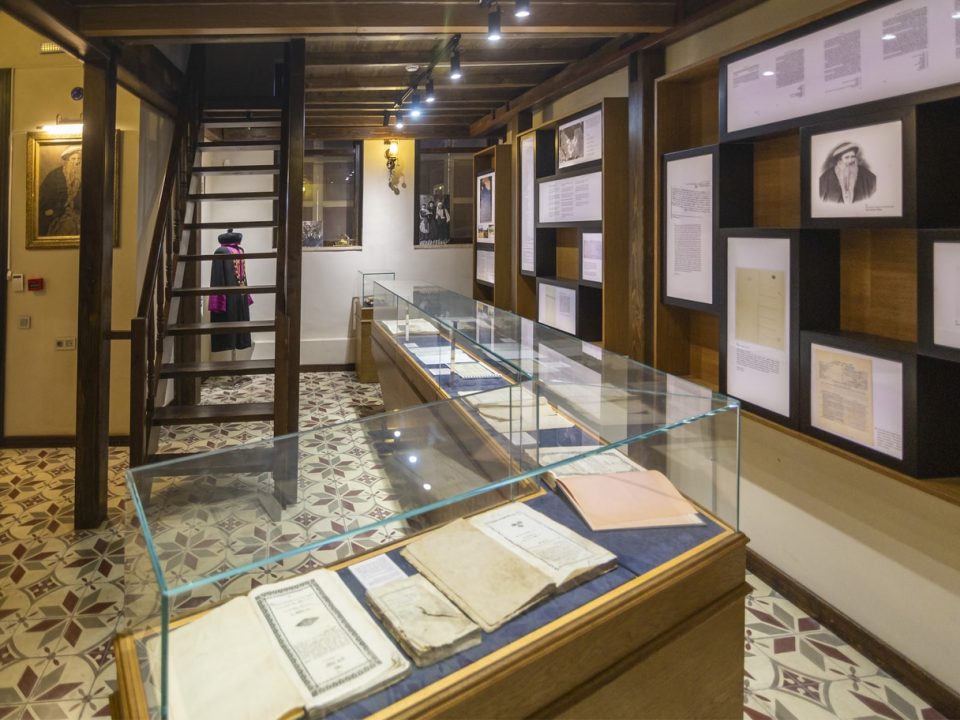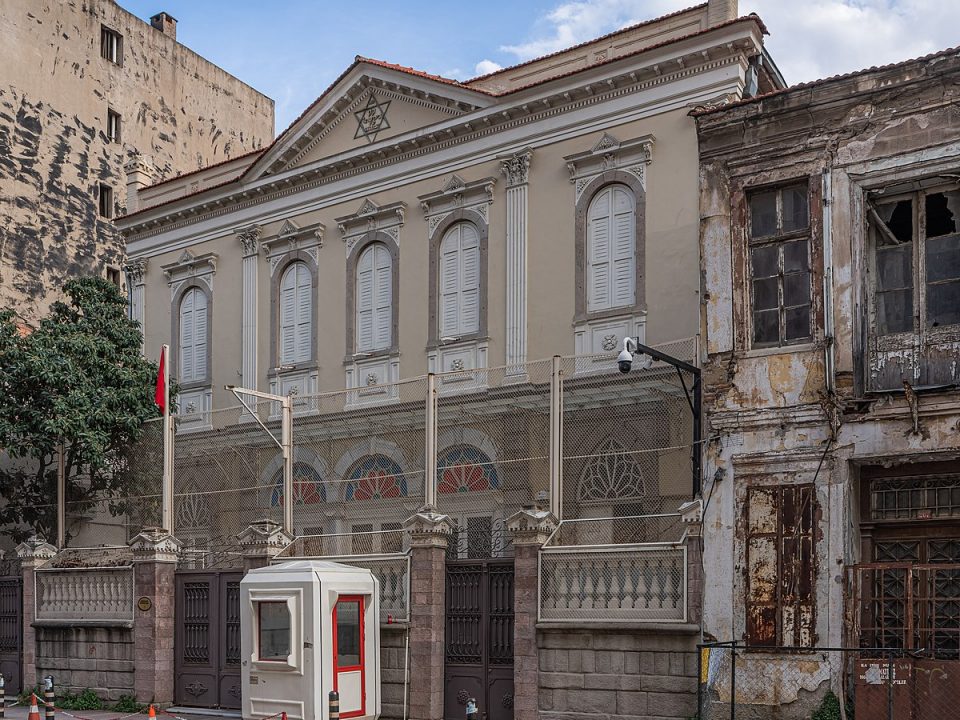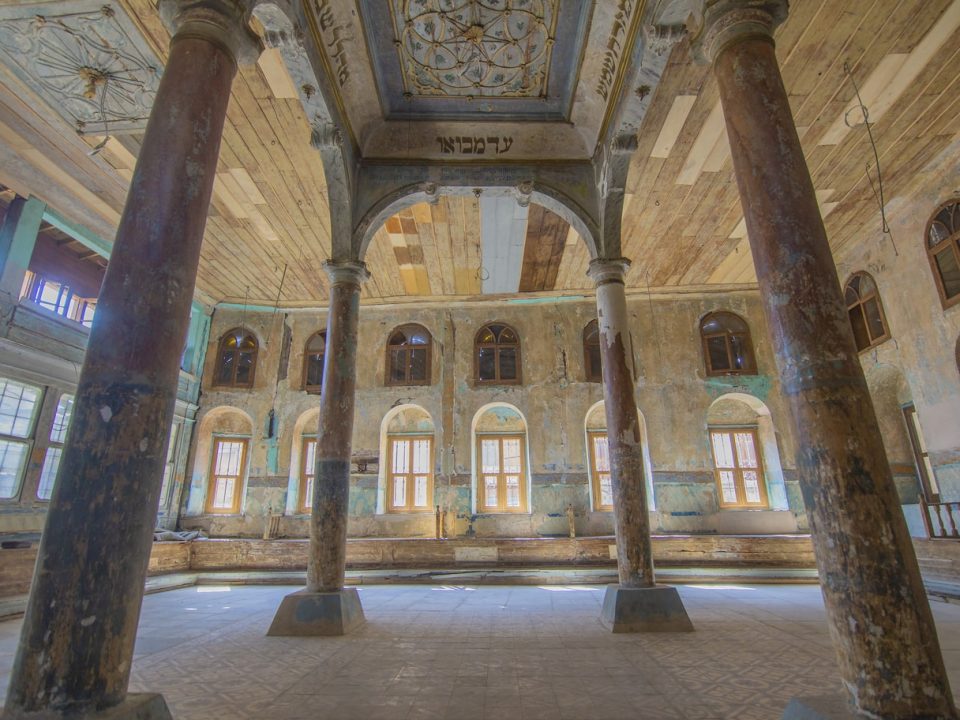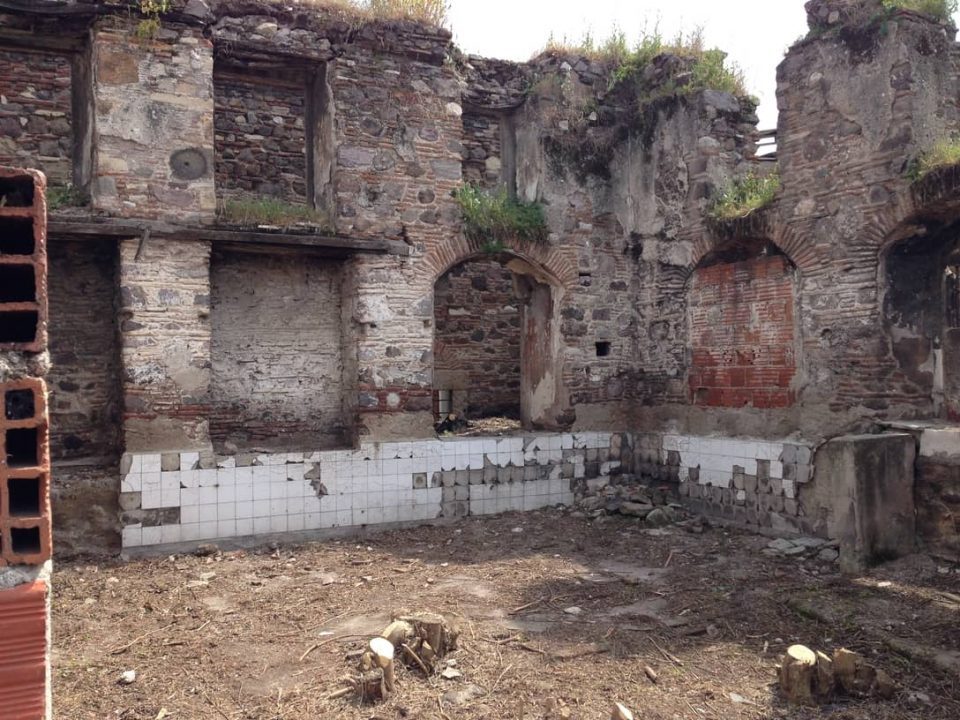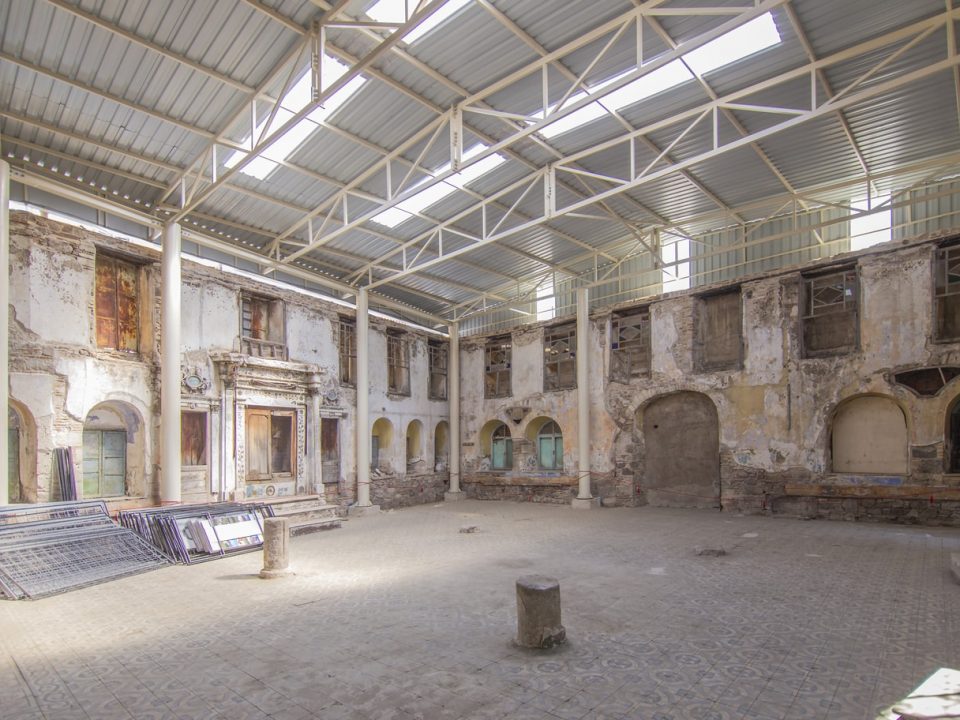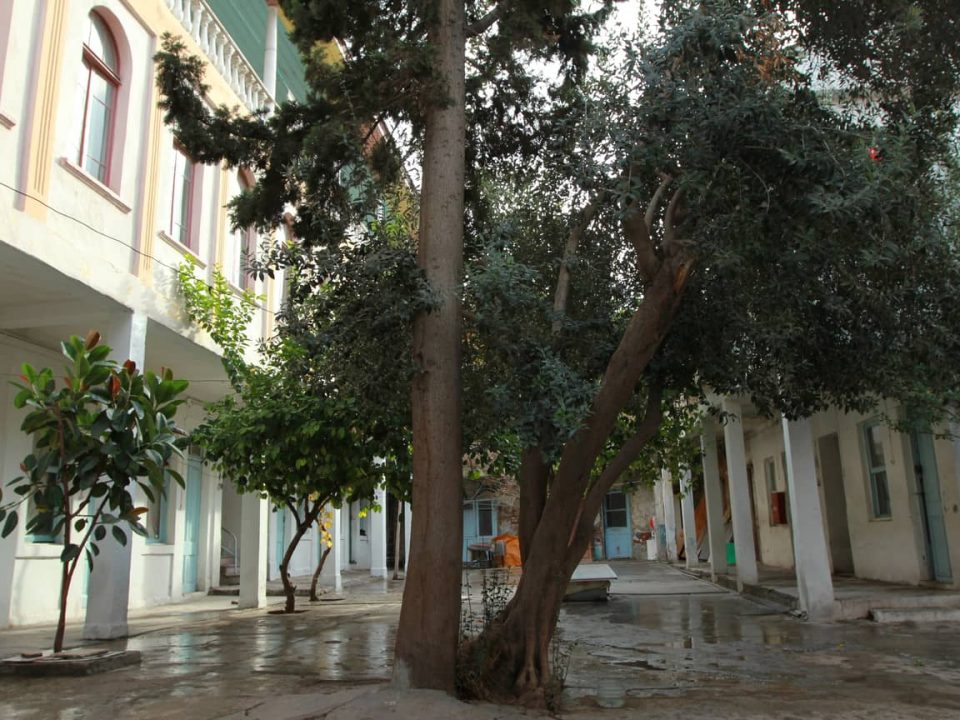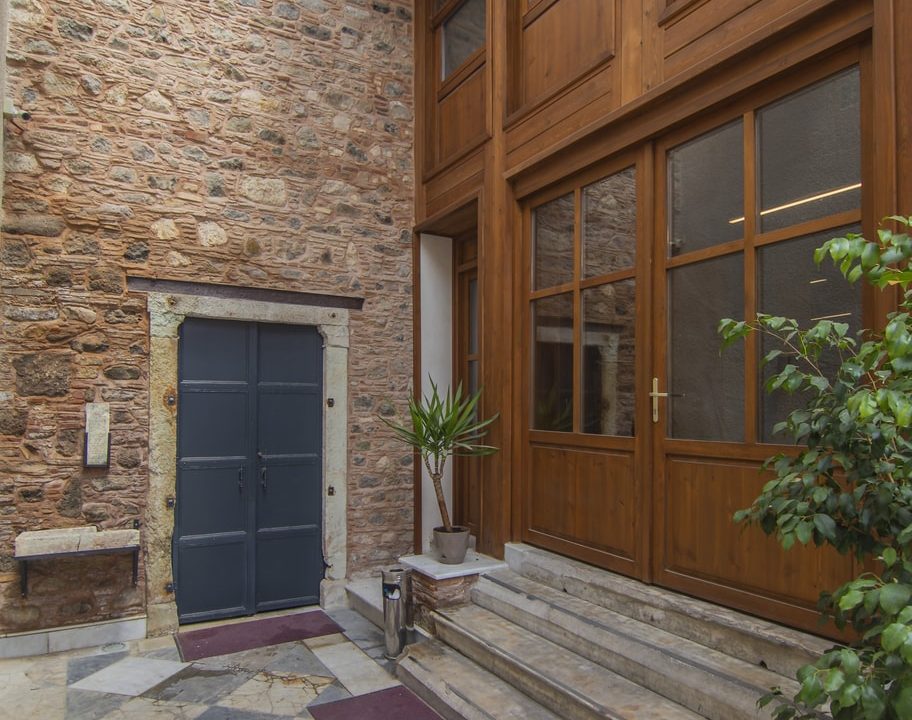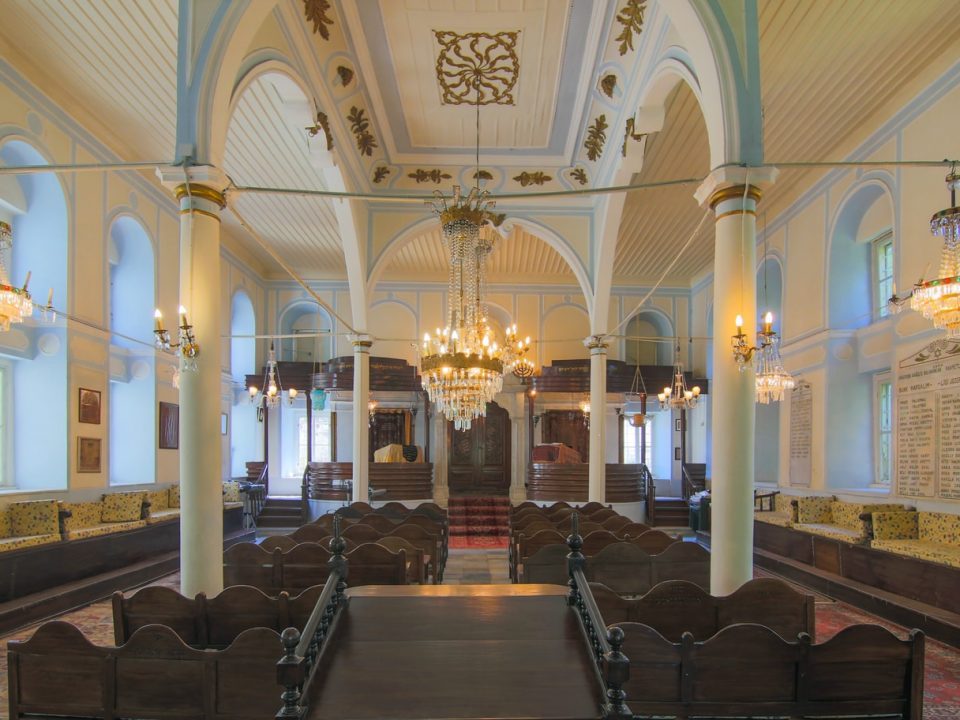Kortijos (cortejos) were the dwellings carrying the architectural characteristics brought to Izmir by the Sephardic Jews as they migrated from the Iberian Peninsula to the Ottoman Empire. Surrounded by the high walls of a two-storied building, the rooms of a kortijo would be facing a courtyard with a faucet or well, serving like a common guest room.
Kurtuluş Mah., Anafartalar Cad., Konak – İzmir
+90 232 464 07 18
ebrulitur@ebruliturizm.com.tr
Website
Due to the inscription at the entrance of the Algazi Synagogue, it is accepted that it was built in 1724 by Isaac Algazi. Another view claims that this synagogue existed at least in the 17th century and was controlled by Sabetay Sevi in 1666.
The basement floor was used as Midrash and was a place where Asara Batlanim (ten old men) prayed for the salvation of the country and the people all day long. In addition, unused scriptures and religious objects were stored there before being buried. This place was known as “El Kal de Abaşo” (the Lower Synagogue).
Izak Ben Salomon Algazı, another member of the Algazi Family known to have raised prominent rabbis, is also an associated figure with this synagogue.Bet Hillel Synagogue was established in the house of the Palachi family. Rabbi Hayim Palachi (1788-1869) and his son Rabbi Abraham Palachi (1809-1899) were the most prominent theologians of the Izmir Jewish community in the 19th century. Both being referred to as the greatest men of the period, their reputation went beyond Izmir and the Ottoman Empire then, causing the Jewish theologues of Europe and Middle East to come to Izmir for consultation.
Rabbi Hayim Palachi wrote a total of 72 books all through his life, and of these, 26 books were published. He was awarded the “theologian responsible for justice” in 1861 by the Sultan Abdulmecid.
Along with the tomb of Rabbi Hayim Palachi and the Mikveh (purification pool) in the Gurcesme cemetery, Bet Hillel Synagogue is believed to be among the holy places by Palachi’s students.The Jewish bourgeoisie which started to develop in the middle of the 19th century, left the traditional Jewish quarters and founded a new residential area. This area was the southern coast and hills of the bay, now known as Karatas district. With the gradual population increase in this area, the existing synagogues became insufficient.
To build a new and larger synagogue, an application was filed with Sultan Abdulhamid II. Upon the Sultan’s edict, the construction of Beit Israel Synagogue started on 15th March 1905 and was opened to prayer in 1907. However, economic distress delayed the completion of its internal decoration and the synagogue took its present state only by 1950.
Beit Israel is the largest, most magnificent and ceremonial synagogue of Izmir.A document beloning to Salomon Ben Ezra, who died in 1688, mentions that Muslim Turks prayed in the only existing synagogue of Izmir. The period mentioned in this document is thought to coincide with the period of the Turkish conquest of Izmir and that they prayed in this synagogue since there was no mosque in the city.
This synagogue, surviving through the dangers of fire and earthquakes many times, was damaged in the fire of 1841 and Daniel de Sidi had it repaired in 1851.
The synagogue originally built in a central plan. Inspired by European synagogue architecture, in the early twentieth century, the Tevah was moved from the center to the sides of the Ehal.937 Sok. No:5, Konak – İzmir
+90 232 464 07 18
ebrulitur@ebruliturizm.com.trLocated in the heart of the old Jewish quarter, which is the historical market place of Izmir, the synagogue was known with two names. “Orahim” (in Hebrew) and “Foresteros” (in Spanish), meaning “foreigners” or “guests” in both languages indicates that it served new Jewish immigrants who came to Izmir and joined the local Jewish community. The synagogue was probably built in the 17th century and was active until it was destroyed by a fire. After it collapsed and ceased to function as a synagogue, its courtyard was transformed to a kosher poultry slaughterhouse where atonement ceremonies were held before Yom Kippur.
927 Sok. No: 79, Konak – İzmir
+90 232 464 07 18
ebrulitur@ebruliturizm.com.tr
Website
Hevra Sinagogue’s name is mentioned in very old texts as “Talmud Torah”. Known to have existed during the period of Joseph Escapa, in the 17th century, this synagogue was burnt in fires and rebuilt several times. Rebuilt after the fire in 1838 by Chelebi and Menahem Hacez brothers, it was burnt again in the fire of 1841 and remained in a ruined state for many years.
Built in the central plan, the Hevra Synagogue is a typical Izmir synagogue with its Tevah, triple Ehal composition and Midrash. The Tevah here, alike to Shalom Synagogue, was in the form of the prow of a galley inspired by the Ottoman galleys which brought the Jews from Spain. The huge number of the Sefer Torah (Torah scrolls) once available in the Hevra Synagogue, ensured a prestigious status.Kortijos (cortejos) were the dwellings carrying the architectural characteristics brought to Izmir by the Sephardic Jews as they migrated from the Iberian Peninsula to the Ottoman Empire. Surrounded by the high walls of a two-storied building, the rooms of a kortijo would be facing a courtyard with a faucet or well, serving like a common guest room.
Kurtuluş Mah., Anafartalar Cad., Konak – İzmir
+90 232 464 07 18
ebrulitur@ebruliturizm.com.tr
Website
The Portuguese Synagogue is the only synagogue in Izmir which identifies the origin of its founders. It is one of the six synagogues known to have existed in the period of Chief Rabbi Joseph Escapa, i.e., as of 1620s, and is referred to be the largest synagogue in Izmir in that period.
Portuguese Synagogue, considered to be the fortress of the anti-Sabbataists, closed its gates to Sabbatai Zvi when his movement expanded. On the other hand, Sabbatai and his supporters entered the synagogue by breaking the gates and chased away the rabbis who were the leaders of their opponents. Salomon Algazi, one of the founders of Algazi Synagogue, was among them.
When Sabbatai Zvi declared himself as the Messiah of the Jews and 18th June 1666 as the deliverance day in that raid, Portuguese Synagogue became the headquarters of the Sabbataist movement and a large group of the Jews of Izmir joined the movement.According to the most popular story, this synagogues was built with the donations of a lady named Donna Gracia Nassi. Known with the nicknames Gveret or La Sinyora, among the European Jews, she was the aunt of Yosef Nassi, who rose to important positions in the Ottoman Empire.
However, the Turkish Jewish historian Avram Galante admits that this synagogue is likely to have been built by a Dutch Jewish lady named Osbio or Aseo, also the founder of the Lazaretto .
Burnt repeatedly in the 16th and 17th centuries, the building was completely destroyed in the fire of 1841 and was rebuilt with the contributions of Moiz Bengiat Yerusalmi.
It can clearly be seen from the ground layout of the synagogue that it was transformed from central plan to dual Tevah application.

